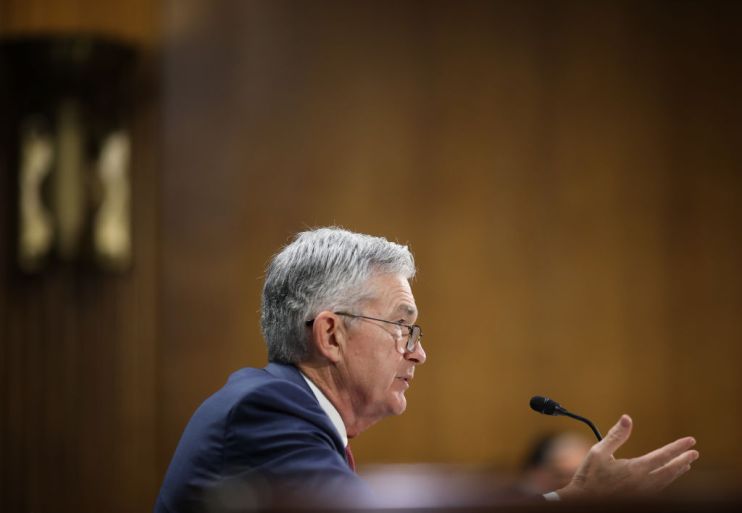Pressure on for Fed chair Powell at Jackson Hole

Most people journey to the snowy plateaus below the Wyoming mountains for a relaxing week of fresh air. US Federal Reserve chairman Jay Powell, however, will find his visit to the north-western ski resort an altogether more stressful affair.
Read more: US manufacturing sector contracts for first time since 2009, survey says
Powell will take centre stage at the Jackson Hole central banking “symposium” tomorrow, a yearly event that sees the big players and pointy-heads of global monetary policy converge on a tiny Wyoming town.
Since its launch in the late 1970s, the symposium has witnessed some famous moments – or, at least, famous in central banking terms. In 2005, future Indian central bank governor Raghuram Rajan presciently warned his audience that high levels of risk-taking with complicated financial products posed a threat to financial stability, only to be slapped down by ex-Treasury Secretary Larry Summers.
In 2007, Fed chair Ben Bernanke laid the groundwork for interest rate cuts to support the failing US financial system. And in 2014, European Central Bank governor Mario Draghi reassured his audience that he would sooth the shaken Eurozone economy. A year later, he launched one of the biggest bond-buying programmes in history.
Between a rock and a hard place
Tomorrow, the eyes of global investors will be firmly trained on Powell, who is widely expected to signal a further reduction in US interest rates following the Fed’s July meeting, which saw a 25 basis point (0.25 percentage point) cut.
The question is, how dovish should Powell be? Investors are pricing in at least two more 25 basis point cuts by the end of the year. Seema Shah, chief strategist at Principal Global Investors, says the Fed has to say a rate cut is likely in September. “To not deliver that would be taken very, very negatively by the markets.”
Yet the US economy is relatively strong. Unemployment is at 50-year lows, wages are growing, the stock market is 10 years into a bull run, and growth is higher than almost all other developed economies.
Adding to Powell’s problems is the man in the White House. US President Donald Trump has kept unprecedented pressure on the Fed to cut rates. He tweeted today: “Our Federal Reserve does not allow us to do what we must do. They put us at a disadvantage against our competition.”
Read more: US Fed minutes show central bankers debated cutting interest rates more aggressively
Tom Carroll, head of asset management at investment firm Sanlam, says Powell “is in a very difficult situation… If he’s seen to be too dovish, then is he pandering to the tweets of Donald Trump?”
Challenges ahead
The theme of this year’s central banking symposium in Wyoming is “challenges for monetary policy”. Chief among the challenges for the Fed and other central banks is that with interest rates close to record lows and bond markets saturated with their money, they’re out of ammo.
Carroll says central banks are in “uncharted territory” and wonders whether further interest rate cuts can “make any difference” to the economy. Given that central banks have struggled to stoke inflation even with ultra-loose monetary policy, “is another quarter point really going to make that much difference?”
Another issue that will be discussed in Wyoming is the way central banks communicate to the economy. Daco says that although Powell’s job is “almost impossible,” he has to carry some of the blame for market dissatisfaction with the Fed’s messaging on the economy.
Shah says Powell has been “whipsawed” by the US-China trade war just as markets have. It’s “such a key factor,” she says, “that each announcement can entirely change the forecast”.
Read more: Chinese renminbi falls to lowest versus dollar since 2008
The issue hints at another major challenge to monetary policy, which symposium attendees will discuss in hushed tones: Trump. Central bankers and financial markets like certainty, but with the current leadership of the US, they have to adapt to a world without any.